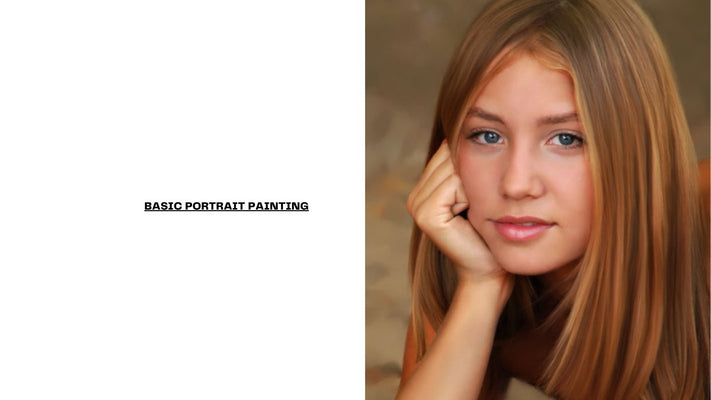Tutorial How to Use Photoshop Brushes in Corel Painter
Originally Published September 2009
As you probably know, Photoshop brushes don’t work in Painter, and vice versa. But it’s quite possible to “convert” your favorite Photoshop brushes and bring them into Corel Painter. Painter’s Captured dab uses a greyscale bitmap image, just like the brushes in Photoshop. To convert them, just create an image of the brush tip in Photoshop, save the file, open it in Painter, and “capture the dab.” It’s really pretty easy, so let’s get to it.

First, create a new file in Photoshop, about 6 inches square at 300dpi, with a white background. Choose the Brush tool (select the brush icon, or press B). Open the brush selection list and find a brush you’d like to bring into Painter. I’ve got a brush shaped like blades of grass, so I’ll pick that one.

With opacity and flow both set to 100, click the mouse once in the middle of the image. This gives you one copy of the brush “tip”. Now save this file (either JPG or PSD will work fine), and close it. Open this same file now in Painter.
Step One: Copy a variant
Before you make changes to a variant, copy it and make your changes to that copy. This way you won’t overwrite the default brushes (or one of your own, for that matter). To do this, click on the little triangle next to the brush selector (as shown below), and you’ll get a flyout menu. Choose “Save variant…” For our example, I’ll be copying the Captured Bristle variant of the Acrylics. When I click on “Save variant…”, a save dialogue appears, with the name filled in for me as “Captured Bristle.” If you’re updating an existing brush, you’d accept the name, but in our case we’re creating a new version. So I’ll type in “Captured Grass”. When I click “OK”, a new variation named “Captured Grass” is added to the Acrylics category. To see it, click on the brush selector drop-down, and there it is. Select it.

Step Two: Capture the dab
At this point, you have your Photoshop brush image open in Painter, and your brand-new Captured Grass variant is selected. Time to capture the dab! This can be a little tricky, so follow along carefully. Type R (or choose the rectangular selection icon). Click on your mouse and begin to draw the selection outwards from the upper left corner. While drawing the selection, depress the Shift key. This constrains the selection to a perfect square. (Warning: do not press the Shift key first, or Capture Dab will be grayed out in the next step.)

With this square selection active, click the brush selector triangle again. This time, choose “Capture Dab” from the flyout menu. (If it is grayed out, try your selection again, making sure not to press Shift until you are making the selection.) Nothing seems to happen, but it did capture the dab. Now let’s adjust our new variant.
Step Three: Adjust
Open the Brush Creator (go Window > Show Brush Creator, or type CMD/CTL+B). Click on the Size tab, and you’ll see your brush shape in the preview window. If you see a black circle, instead, click on the preview window. This will toggle the brush preview. Here’s what you should see:

Click in the practice area to see how your new variant works. We’ll make some adjustments so that each image is separate, like in Photoshop. In this case, we don’t want the images to repeat one on top of another, like a normal Painter brush. We want it to act more like the Image Hose. So click on the Spacing tab. Move the sliders for “Spacing” and “Minimum Spacing” all the way to the right, so there’s no overlapping. There are other adjustments you can make, as laid out in John’s article, above. But for now, we’re all set. Go ahead and exit the Brush Creator. Notice that there is no save button on the Brush Creator. Whatever changes you make are automatically saved upon exit. This is why I had you work on a copy right from the start.












